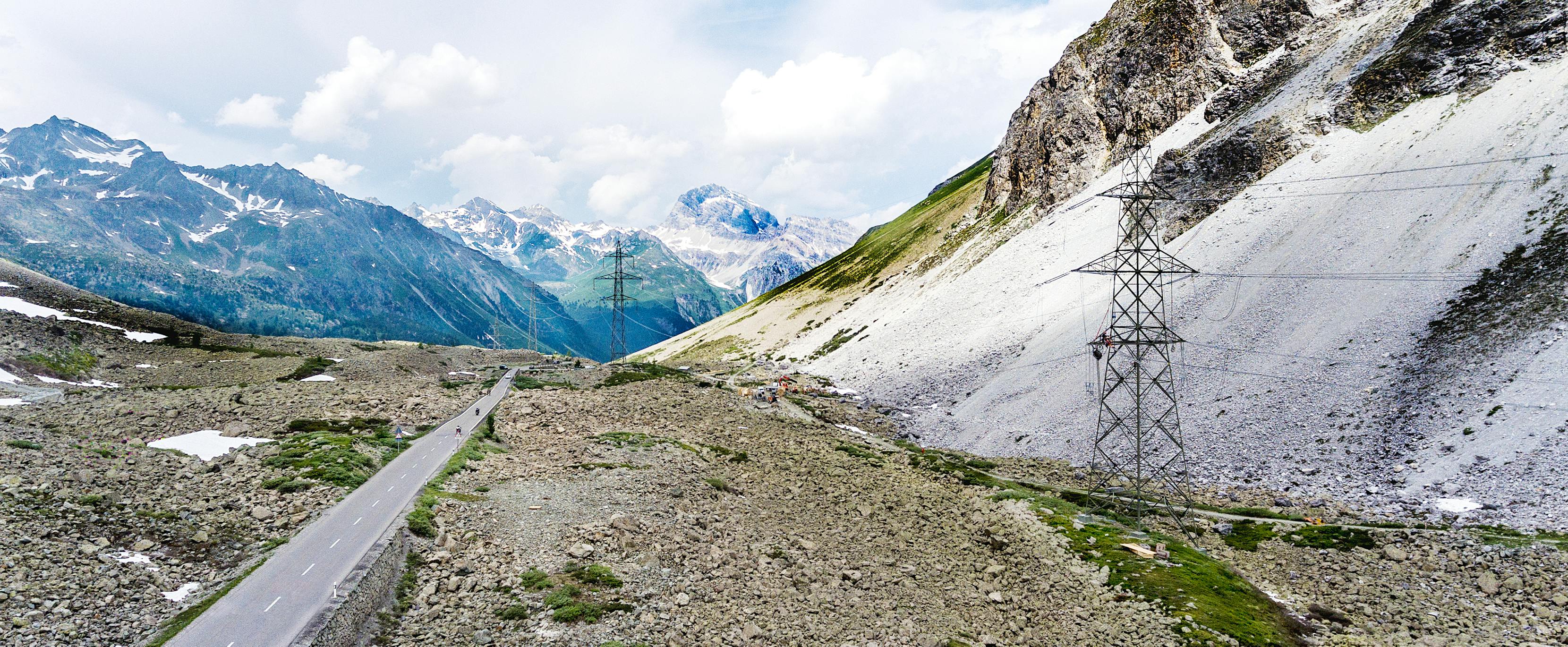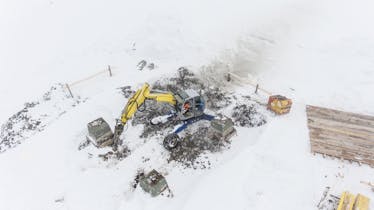Swissgrid has completed the repair work for the damaged lines on the Albula Pass. They were put back in service on schedule at the end of July.
Swissgrid began repairing the 380 kV lines on the Albula Pass in mid-April. Four pylons and the conductors had to be replaced. The total cost of the repairs is around CHF 2.8 million. The lines have been back in operation since 29 July 2019 as planned. They are key components of the Swiss transmission grid, particularly along the north-south axis. Weather conditions proved particularly challenging for this work, especially in the heavy snowfall experienced in May.
The repair was needed after extremely high winds from the storm front Vaia knocked over four pylons near the top of the pass in the night of 29 to 30 October 2018. The two 380 kV lines affected (Filisur – Robbia and Pradella – Robbia – Sils) had been out of service ever since. Given the latent risk of avalanches, Swissgrid decided against constructing a provisional connection with emergency pylons for safety reasons. Grid security in the transmission grid was ensured at all times, while the transmission grid did not suffer any supply disruptions despite the damage. The monthly net transmission capacity (NTC) to Italy was reduced by 900 MW following the incident but has now been restored to its original level.
The line’s importance as a north-south connection made the repair particularly urgent. Swissgrid therefore started the work before the Albula Pass road was officially opened. It was only able to do so because the Civil Engineering Office of Grisons had cleared the snow on the Engadin side of the pass road and because a temporary avalanche safety system had been created. Thanks to the excellent quality of its cooperation with the Canton of Grisons, Swissgrid was already able to start working on the four pylons on 15 April.
Once the road had been cleared, the old foundations were removed and new ones laid. Next, the pylons were built and the conductors installed. The new pylons have the same geometry as the old ones but can withstand even greater wind forces due to their stronger foundations and supporting structures. Two pylons now also have foundations with built-in avalanche protection.
High safety and environmental standards
At Swissgrid, safety is the top priority. With this in mind, we enforced strict safety and environmental regulations at the job site. The high alpine terrain and unpredictable weather of the snowy 2018/2019 winter on the Albula Pass posed serious challenges for the repair crew. Temperatures were extremely low in April and May, and there was also snowfall, which the strong wind blew into drifts. The local avalanche commission issued an avalanche bulletin every day, and pass crossings and activities were scheduled according to this information. The specialists at the work sites were equipped with avalanche detectors and a container would have provided shelter for 48 hours in an emergency. The work was completed without any accidents.
To protect the high alpine landscape, Swissgrid developed and executed a comprehensive environmental plan. Helicopters were required to stay within defined corridors when travelling from the road directly to the pylon work sites, for example. Construction equipment was driven to the work sites once only and, upon its arrival, moved as little as possible. Soil layers were removed and stockpiled separately and were then placed back in their original locations once the foundation work was done. The natural world was then restored to its original condition as much as possible.
The original lines between La Punt and Filisur were put into service in 1968 by Elektrizitäts-Gesellschaft Laufenburg (EGL).
Albula line repair in figures
| Line concerned | 380 kV line Pradella – Sils |
| Circuits | Filisur – Robbia Pradella – Robbia – Sils |
| Number of pylons affected | 4 |
| Amount of concrete used | approx. 300 tons |
| Amount of steel used | 120 tons |
| Length of conductors installed | 30 km |
| Number of people involved in the project | approx. 70 |
| Costs | CHF 2.8 million |













